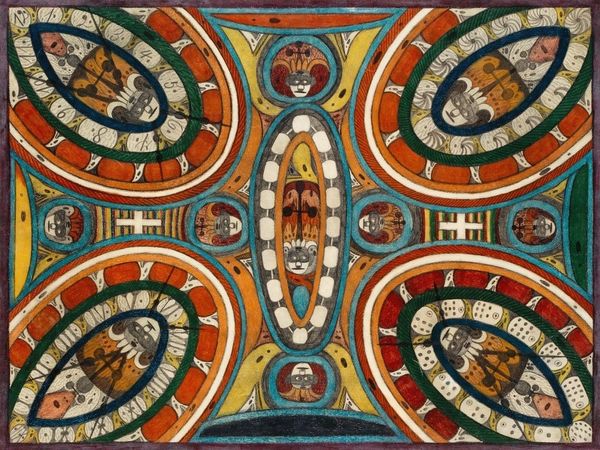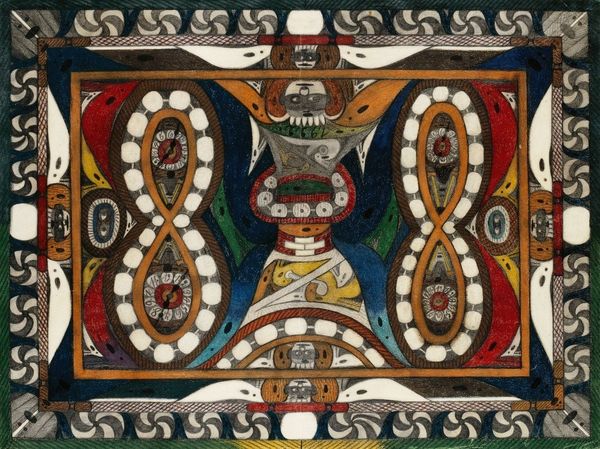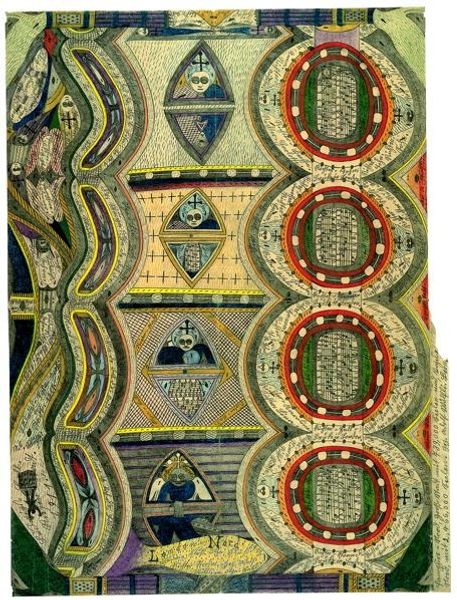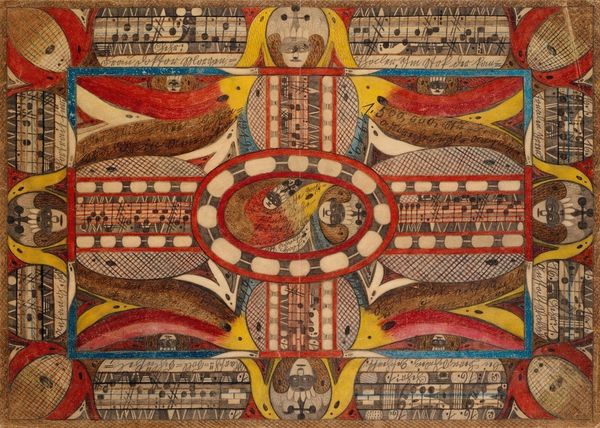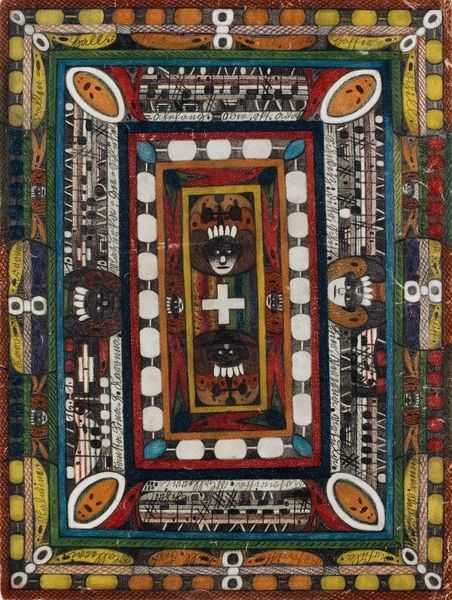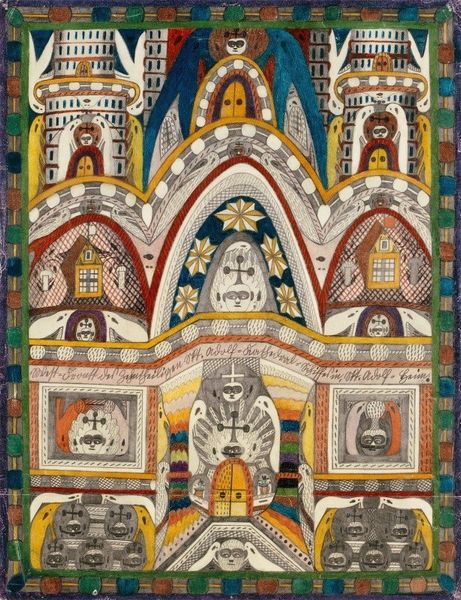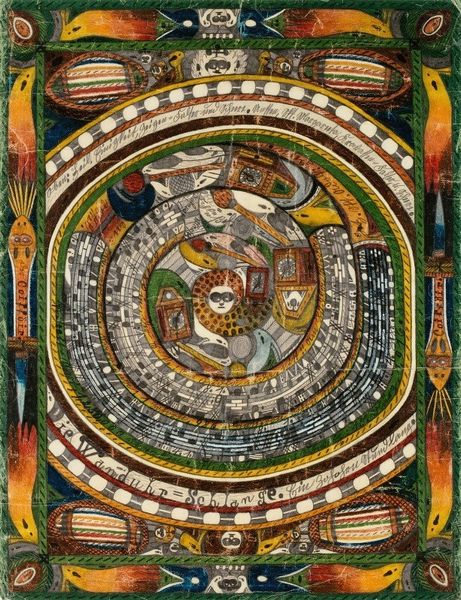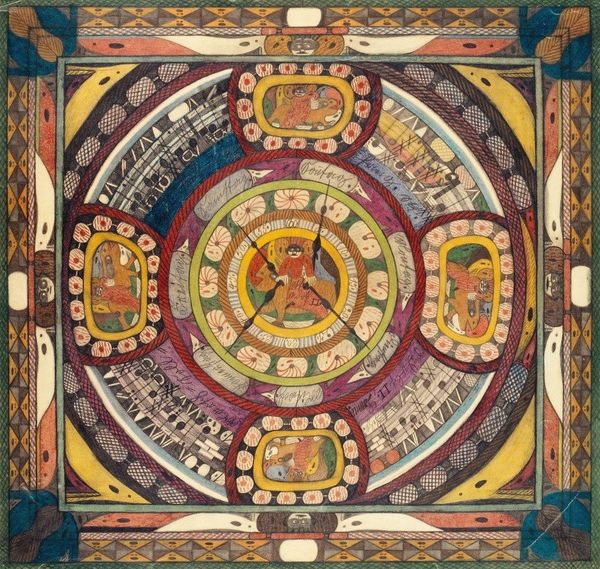
mixed-media, painting
#
mixed-media
#
painting
#
outsider-art
#
abstract
#
geometric pattern
#
geometric
#
abstraction
Copyright: Public Domain: Artvee
Curator: Looking at this piece by Adolf Wölfli titled "Noga=Ei; Ist Das allergrösste Dorf der gantzen Erde; Villerville", dating from 1921, what immediately strikes you? The work, created with mixed-media including paints, has an intensely intricate design. Editor: The complexity is overwhelming, isn’t it? It's a labyrinth of vibrant, almost psychedelic patterns, layered upon one another. I find a deep sense of almost obsessive geometry, which suggests a need for absolute order. It is unsettling, though. Curator: That sense of order is a key component of Wölfli's art. He lived the majority of his adult life in a mental institution and much of his artwork was a coping mechanism with his isolation. What looks chaotic on the surface is a very structured personal symbolism. Think about the context: a world recovering from a World War and redefining itself amid social and political turmoil. Editor: Absolutely. Knowing his background and the societal pressures of the time allows us to understand Wölfli's art. Do you think the geometric designs represent an effort to control an uncontrollable external world? There’s a deep history here about society’s view and treatment of mental health patients to unearth. The outsider art status itself is a socio-political classification with roots in classism. Curator: Yes, that is likely true, given that the term "outsider art" emerged largely in a period defined by increasing industrialization and urbanization. In the institutional spaces of early-twentieth-century Europe, individuals like Wölfli were creating work dismissed as primitive, naive, and therefore, outside established culture and its system of judgment. That context profoundly affects how the work was displayed. Editor: This makes me consider the power dynamics at play – the gatekeepers deciding what qualifies as ‘art’. His geometric figures evoke tribal motifs almost weaponized against isolation. They transform confinement into a visionary realm and represent reclamation and perhaps even resistance. Curator: He built his entire cosmos, defying marginalization by constructing his alternate reality in a grand artistic gesture. Thinking of this piece within the social fabric of art, and the role that institutions and markets play within art, brings new layers to explore. Editor: This is a potent reminder that we all hold the power to reimagine our surroundings and shape our realities even when constrained, prompting important discussion about liberation and the impact we can have.
Comments
No comments
Be the first to comment and join the conversation on the ultimate creative platform.

